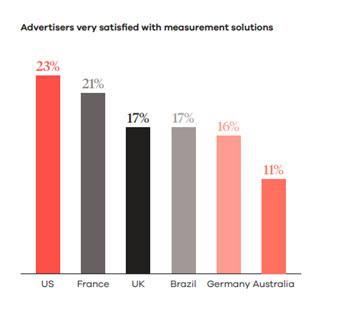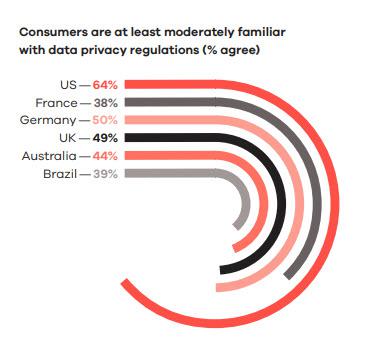A recent survey of 200 U.S. advertiser and agency video decision-makers finds them reporting that 55% of video advertising budgets are allocated to audience-based buys, versus 45% to traditional
demo buys — with little expectation of any significant shift in that ratio in the next year.
But one in five don’t think they’re reaching the right audiences very
effectively, and on average, respondents estimate that their video ads aren’t relevant to one in three of consumers reached.
Those are findings from Xandr’s latest Relevance
Report, based on 15-minute online surveys conducted by Advertiser Perceptions in the U.S., U.K., France, Australia, Germany and Brazil in August and September. Xandr, as most of you know, is
AT&T’s advanced TV advertising and analytics platform.
In most regions, at least half of respondents — and two-thirds in France and Brazil — reported using audience
targeting.
advertisement
advertisement
Germany was the exception (48%), likely because advertisers in that country were found to be the least satisfied with the targeting aspect of their video strategy (46% are
less than satisfied), according to the research. Across all other markets, at least three in five reported being at least moderately satisfied with their targeting precision.
The U.S.
sample had a 50/50 split of advertiser and agency executives. All were from organizations with more than $1 million in digital video spend and more than $1 million in TV spend.
Other
findings about U.S. video decision-makers’ practices and opinions:
*80% said that reaching the right audience is the most important step in delivering a relevant video ad
experience, but just 21% said they’re completing each step in reaching audiences effectively.
*Nearly two-thirds (63%) said delivering effective creative is the most critical
factor in video advertising relevance, while 50% named selecting the media type as the most important factor. But again, under one-quarter said they’re implementing those functions to best
advantage (24% of those who prioritized effective creative, and 21% of those who prioritized selecting the media type).
*79% reported making any investment in data in the last 12 months
— proportionately fewer than the other markets: U.K. (97%), Brazil (94%), Australia and France (each 88%), and Germany (86%).
*Similarly, 35% specifically reported having hired a
data scientist during the past 12 months, versus 65% in the U.K. and between 46% and 55% in the other markets.
*50% invested in data partnerships and 30% acquired a customer data
platform in the past 12 months — both roughly in line with the other markets.

*41% said that ensuring data compliance and identifying audiences across
screens are top challenges.
*To address the challenge of major browsers phasing out third-party cookies, 36% of U.S. respondents say their company or main client will reallocate spend to
other channels without third-party cookies, 33% say they will build on an effective identifty solution, and 32% say they’ll develop a more sophisticated tech stack. Here’s the
across-market comparison:

*23% are very
satisfied with measurement solutions — more than in most other markets:

*Two-thirds are looking for data that ties to lower-funnel metrics
and trusted consumer identity data to generate deeper insights.
*21% are very satisfied with their ability to optimize based on back-end campaign results:

*64% say that consumers are at least moderately
familiar with data privacy regulations — higher than most other markets:
